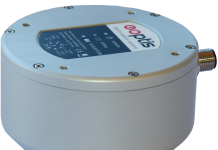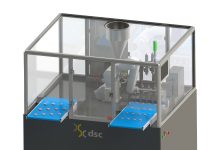Innovation technology and benefits
 In the last decades, the so-called high-temperature (HT) drying technology has been widely applied by pasta manufacturers. With respect to the low-temperature drying process, drying carried out at high temperatures leads to an improvement in pasta color and firmness, lower cooking loss with higher cooked weight and less stickiness and also a decrease in bulkiness and adhesiveness. In order, the level of starch damage was lower in HT-dried pasta, probably due to lower activity of amylolytic enzymes, so it is reasonable to assume that an increased thermo-stability of starch has a positive influence on the cooking properties of pasta. Regarding the quality of the raw material, it could be considered a noncritical parameter if pasta was dried at high temperature and it was possible to obtain a good cooking quality pasta also using pasta with low gluten content semolina. Furthermore, there is a reduction in microorganisms as total count and shorter drying times as well as the increased plant productivity. In conclusion, the quality characteristics of pasta during cooking improved as drying temperature increased. However, in order not to lose the technological advantages of HT in pasta drying is important keeping heat-damage under control, in particular using proper tools, such as thermo-resistances to measure temperature and psychrometer, an instrument which allows to determine the relative humidity, or by using capacitive resistive probes to control the relative humidity and temperature, because these two parameters, as mentioned, are crucially to achieve this process.
In the last decades, the so-called high-temperature (HT) drying technology has been widely applied by pasta manufacturers. With respect to the low-temperature drying process, drying carried out at high temperatures leads to an improvement in pasta color and firmness, lower cooking loss with higher cooked weight and less stickiness and also a decrease in bulkiness and adhesiveness. In order, the level of starch damage was lower in HT-dried pasta, probably due to lower activity of amylolytic enzymes, so it is reasonable to assume that an increased thermo-stability of starch has a positive influence on the cooking properties of pasta. Regarding the quality of the raw material, it could be considered a noncritical parameter if pasta was dried at high temperature and it was possible to obtain a good cooking quality pasta also using pasta with low gluten content semolina. Furthermore, there is a reduction in microorganisms as total count and shorter drying times as well as the increased plant productivity. In conclusion, the quality characteristics of pasta during cooking improved as drying temperature increased. However, in order not to lose the technological advantages of HT in pasta drying is important keeping heat-damage under control, in particular using proper tools, such as thermo-resistances to measure temperature and psychrometer, an instrument which allows to determine the relative humidity, or by using capacitive resistive probes to control the relative humidity and temperature, because these two parameters, as mentioned, are crucially to achieve this process.
References
- Alamprese et al., “Role of pasteurization heat treatments on rheological and protein structural characteristics of fresh egg pasta”, Eur. Food Res. Technol., 221, 759-767, 2005.
- Anese et al., “Effects of drying processing on the Maillard reaction in pasta”, Food Research International, 32, 193-199, 1999
- Baiano et al., “Influence of drying temperature on the spaghetti cooking quality”, Journal of Food Engineering, 76, 341–347, 2006
- De Cindio et al., “Modelling of drying for high quality pasta production”, Department of Chemical Engineering and Materials, 3rd International Symposium on Food Rheology and Structure
- De Noni and Pagani, “Cooking properties and heat damage of dried pasta as influenced by raw material characteristics and processing conditions”, Food Science and Nutrition, 50, 465-472, 2010
- Guler et al., “Effects of industrial pasta drying temperatures on starch properties and pasta quality”, Food Research International, 35, 421–427, 2002
- Lamacchia et al., “Changes in pasta proteins induced by drying cycles and their relationship to cooking behavior”, Journal of Cereal Science, 46, 58–63, 2007
- Mariotti et al., “Influence of the Heating Rate on the Pasting Properties of Various Flours”, Department of Food Science and Microbiology, 57, 564-572, 2005
- Singh and MacRitchie, “Changes in proteins induced by heating gluten dispersions at high temperature”, Journal of Cereal Science, 39, 297–301, 2004
- Wyland and D’Appolonia, “Influence of drying temperature and farina blending on spaghetti quality”, Department of Cereal Chemistry and Technology, 59, 199-201, 2003
- www.professionalpasta.it
by Arianna Roda – Istituto di Enologia e Ingegneria Agro-alimentare, Università Cattolica del Sacro Cuore




your drying technology is very.we also use this methods.but, i have a question 1) how we can cobtrol the internal humidity of the dryer? 2) what are the advantages of using hot water during dough mixing? 3) at what temperature water suitable for dough mixing?
Comments are closed.